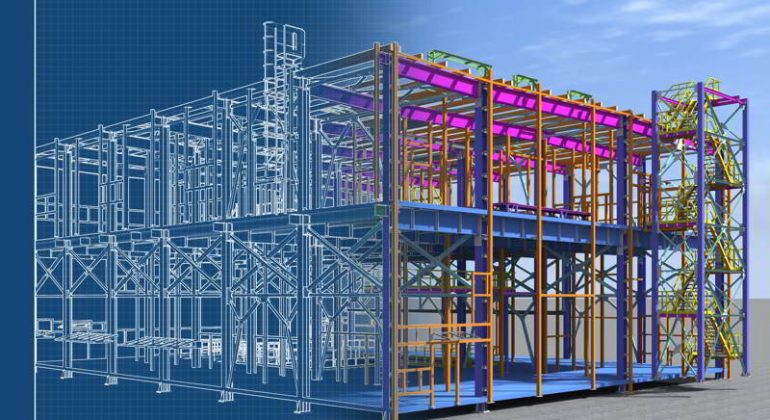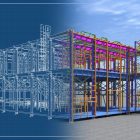On August 3, 2021, the Ministerial Decree n.312/2021, which modified the Baratono Decree, the first point of reference for the introduction of BIM (Building Information Modelling) in the national legal system, came into effect. The Ministerial Decree dictates new times for the mandatory adoption of BIM and identifies it as the main tool for implementing a digital transition in the building sector, in accordance with the progression times of the PNRR, of which digitization is one of the missions.
Building Information Modeling (hereinafter BIM) is one of the main components of the digital revolution that is affecting the construction sector and the world of public contracts (of digitization in public contracts, we talked about it here on this Observatory). BIM is a digital information system relating to buildings and infrastructures, integrated with physical, performance and functional data of the work, which contains information on the entire life cycle of the work itself: from design to construction up to its demolition and decommissioning.
The Law Decree n.77/2021, or New Simplification Decree, in paragraph 6 of art. 48, explicitly refers to the BIM methodology. In particular, the above-mentioned article, entitled “Simplifications regarding the award of PNRR and PNC public contracts”, provides for the contracting stations the possibility that for contracts to be financed with PNRR and PNC resources, the assignment of a bonus score is expected for the use in the design of electronic methods and tools, in accordante to art.23, paragraph 1 letter h), of the Legislative Decree n.50 of 2016. The Law Decree n.77/2021 also provided for the adoption, within thirty days of its entry into force, of a provision by the Ministry of Infrastructure and Sustainable Mobility (MIMS), in order to coordinate the rules and technical specifications with the provisions of the Baratono Decree, D.M. no. 560/2017.
In pursuing a path towards an effective and concretely feasible digital transition, as the PNRR encourages us to do, it is appropriate to learn to distinguish between digitization, digitalization and digital transformation. The first term indicates the translation into the language of bits from analogical documents to archiving formats that can be managed by computers, while digitization is the process by which traditional interactions and information exchanges are supported by the technologies of digital models. Finally, digital transformation represents a systematic change in the working model, in fact it is configured as the change in the ways in which the building process is conceived and the opportunity to transform it into a network of interoperable information relationships. Compared to the commitment of the PNRR, the Ministerial Decree n.312/2021 is the mean aimed at implementing a digital transition program for the construction market, through digitized processes for public contracting stations, capable of producing significant effects also for the private market. The BIM methodology then presupposes, in order to increase the transition process, an exchange of knowledge, which concerns not only the actors of the building process, but also the information management tools, namely all the functional components of the construction.
The Ministerial Decree n. 312/2021 has also identified new times for the mandatory adoption of BIM:
January 1, 2022: for new construction works and interventions on existing buildings, except for ordinary maintenance works for a basic tender amount equal to or greater than 15 million euros;
January 1, 2023: for new construction works and interventions on existing buildings, except for ordinary and extraordinary maintenance works for a basic tender amount equal to or greater than art. 35 public contracts code;
January 1, 2025: for new construction works and interventions on existing buildings, except for ordinary and extraordinary maintenance works for a basic tender amount equal to or greater than 1 million euros.
The main objective is thus the achievement of an integrated design, and the contracting authorities must fulfill certain conditions for a legitimate use of BIM, such as the adoption of a personnel training plan, the definition of an acquisition plan or maintenance of hardware or software tools, and, finally, the assumption of an organizational act (art. 3, Ministerial Decree n.560/2017). The contracting station must also draw up an information specification (art. 7, Ministerial Decree n.560/2017), which has become pursuant to Ministerial Decree n.312/2021 an independent tender document with respect to the special tender specifications, and indicates the information content necessary for the subsequent phases, such as execution of the works and maintenance. To encourage the use of BIM, the new art. 7-bis then provided for the adoption for the contracting authorities of the so-called reward scores, namely the possibility of inserting additional scores among the award criteria for the offer for the use of specific electronic methods and tools.
This work is licensed under a Creative Commons Attribution 4.0 International License
Source: Extract from IRPA (Research Institute on Public Administration)


